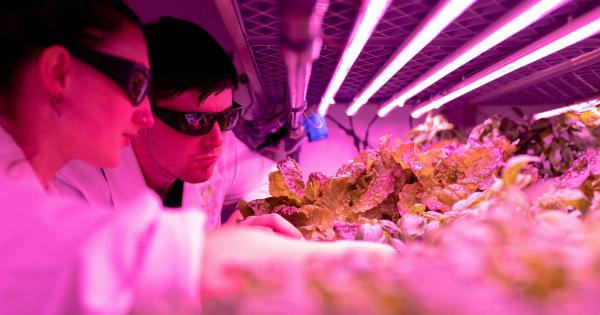For decades, HIV has been a public health concern that has claimed the lives of millions worldwide. Despite advancements in medical research, a cure for HIV remains elusive.
With more than 38 million people living with the virus globally, finding a way to eradicate the virus is more important than ever before. While antiretroviral therapy can suppress the virus and reduce the risk of transmission, it cannot eliminate it entirely.
However, a new method has been developed that has the potential to change the game in HIV research.
Scientists at the National Institute of Allergy and Infectious Diseases (NIAID) have discovered a way to reveal hidden HIV virus cells, which could bring researchers one step closer to finding a cure for HIV. This groundbreaking revelation has been published in the scientific journal, Nature.
The Problem with Hidden HIV Virus Cells
When HIV infects a person, it attacks their immune system, specifically targeting CD4 T cells. These cells, also known as T-helper cells, are responsible for fighting off infections and diseases.
The virus replicates itself by inserting its genetic material into the cell’s DNA, effectively hiding in plain sight. The infected cells continue to produce new viral particles, effectively adding to the virus’ reservoir within the body.
Current antiretroviral therapy is effective at suppressing the virus’ activity, but it cannot eliminate it entirely. Hidden HIV virus cells, also known as latently infected cells, are the biggest roadblock to finding a cure for HIV.
These cells remain dormant for long periods, escaping the immune system’s radar and antiretroviral therapy.
Researchers have long searched for a way to eradicate these hidden HIV virus cells. The problem has always been identifying and targeting those cells specifically.
The New Method
The new method developed by the NIAID team involves using fluorescent dyes to identify and track the cells that contain hidden virus particles.
The dyes are engineered to only become active when the cells are activated, which is what happens when the virus begins to replicate. Thus, these dyes only mark the cells containing active virus particles, allowing researchers to isolate them and study them.
The method was tested on the blood samples of nine infected individuals, all of whom were receiving antiretroviral therapy.
Researchers were able to successfully detect and isolate latently infected cells from all the samples, even in quantities as low as one cell in a million.
Potential Impact on HIV Research
The new method represents a significant step forward in HIV research, providing researchers with a new way to identify and isolate hidden virus particles. This is a crucial step towards finding a cure for HIV.
Once the infected cells are identified and isolated, researchers can study them in detail to discover new targets for therapeutic intervention that can permanently eliminate the infection.
The method can also be used to test the efficacy of new treatments on latently infected cells.
Researchers can use this method to monitor and test the effectiveness of treatments that target these hidden virus particles and determine whether and how much they reduce the viral reservoir in the body.
The Future of HIV Research
The discovery of this new method is a promising development in HIV research. With the ability to identify and isolate the latently infected cells, significant advancements are possible in HIV therapy and cure research.
However, this is just the first step on a long road towards eliminating HIV entirely.
Further research using this method will be required to determine if this method is effective over the long term and if it can be used to develop a complete cure for HIV.
Additionally, researchers will need to optimize the use of the new method to develop a more efficient and cost-effective way to isolate and study effect latent virus cells.
Conclusion
The new method developed by the NIAID team is an exciting development in the field of HIV research. Detecting and isolating hidden virus particles has long been the biggest challenge in the quest for a cure for HIV.
The new method provides researchers with a new and more specific way to identify and isolate those cells, making significant advancements in HIV therapy and cure research possible.
While the development of this method is a significant achievement, it is only the first step towards finding a cure for HIV. More research and development are necessary to optimize the use of this new method and exploit it to its full potential.




























